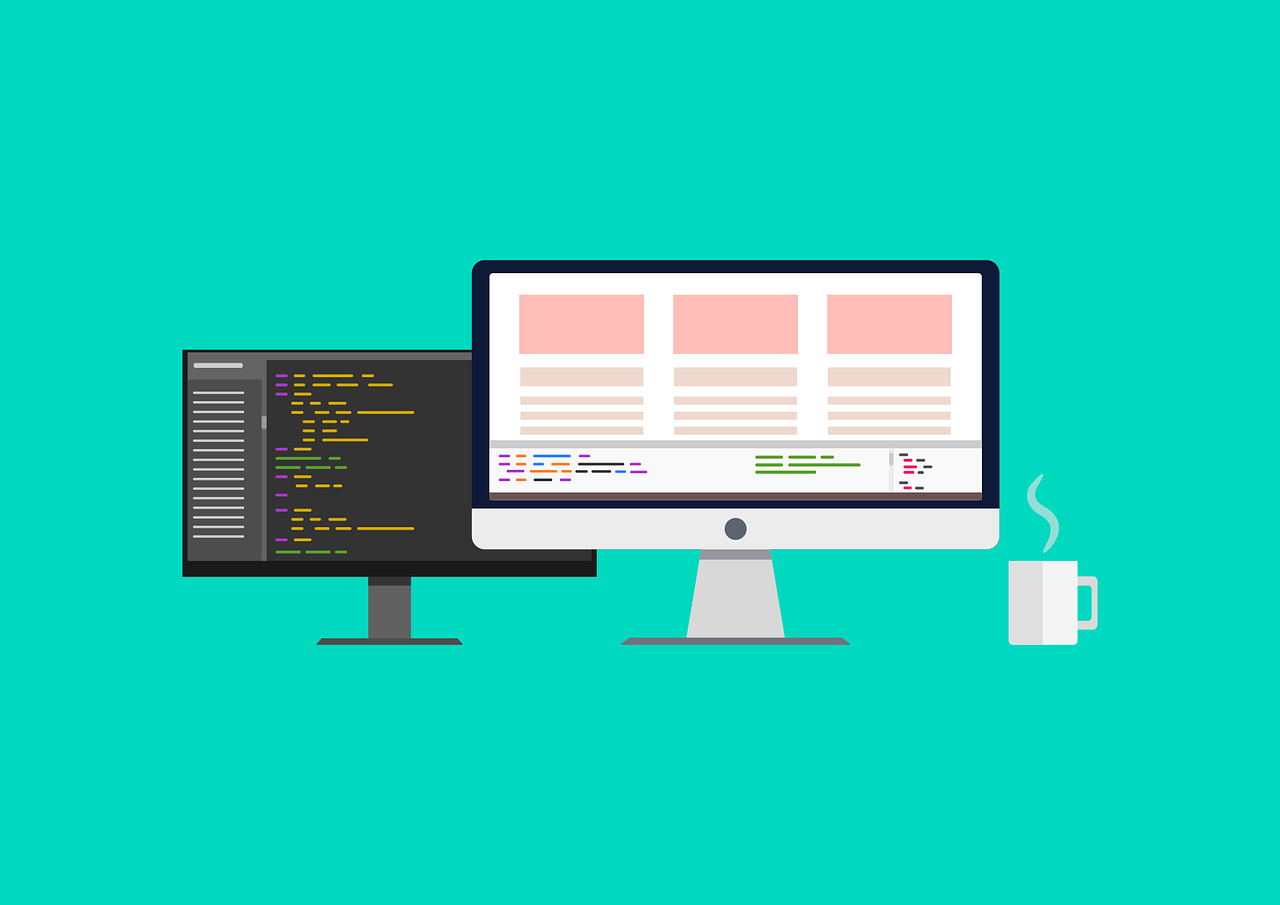5 Reasons to Choose a Proprietary Framework To Build a Secure Business Application
Building safe business applications is becoming highly challenging for businesses all over the world. As businesses deal with many security risks and vulnerabilities, choosing the best front-end framework for growth can be a very difficult task. The framework you choose can either protect your application from breaches or leave it open to hackers. Picture a scenario where you’ve invested months of hard work and significant resources into developing a business application, only to watch it get destroyed by a cyberattack. It’s a nightmare scenario that has affected many organizations, leaving them scrambling to recover their reputation and revenue. Do not fear, because there is hope in proprietary front end frameworks. In this article, we’ll look at five strong reasons to choose a proprietary framework for web application development. Doing so not only provides the necessary security but also paves the way for quick and flexible development.
Understanding Front-end Frameworks

Front end frameworks are pre-written code sets that allow developers to create user interfaces more efficiently and with a scalable and maintainable structure. The codebase is kept organized and consistent by these frameworks, which comprise HTML, CSS, and JavaScript components that can be utilized in other complex projects. These frameworks help developers generate well-structured, dependable code by giving the development process structure. Given below are a few reasons why front-end frameworks are considered important.
- Efficiency: Frontend frameworks offer ready-made components and templates, saving developers time and effort.
- Consistency: They provide a uniform look and feel throughout a site, improving user experience and brand identity.
- Responsiveness: Front-end frameworks facilitate the creation of responsive designs that adapt to different devices, from desktops to mobiles.
Customization for Your Needs
Proprietary front-end frameworks for web development are advantageous because of their adaptability to specific project requirements. These frameworks can be customized to match the unique demands of a project, providing a precise fit. For instance, if a project demands a specific user interface, a proprietary framework can be customized to integrate unique design elements, color schemes, and branding.
Moreover, these frameworks allow for the integration of specific functionalities. For example, if your web development project requires complex data visualization components or interactive features, customization within a proprietary framework can facilitate the inclusion of these elements. It can be considered a complete dynamic solution. Also Read Best Practices for Front-End Web Apps Development With Ext JS to enhance your knowledge on this topic.
Better Performance and Faster Loading

Proprietary front-end frameworks are great at improving the speed and responsiveness aspects of web applications. They achieve this through the following factors.
- Efficient Codebase: Proprietary frameworks feature finely tuned, efficient code, reducing load times and enhancing execution speed.
- Resource Optimization: These frameworks often include tools for caching, minimizing server requests and compressing code and assets.
- Lazy Loading: Proprietary frameworks support lazy loading, loading assets as needed, which speeds up initial page loads.
Real-world cases that use these benefits:
Shown below are some real-world cases that have used proprietary frameworks to receive the above mentioned benefits.
- Netflix: Utilizes proprietary frameworks for smooth streaming, ensuring minimal buffering even on slower connections.
- LinkedIn: Employs a custom frontend framework for real-time notifications and dynamic content loading, providing a satisfactory user experience.
- Amazon: Relies on proprietary frameworks to improve product searches and recommendations, delivering quicker page loads and improved user satisfaction.
These examples show how proprietary frontend frameworks improve web application performance, translating into better user experiences.
Comprehensive Help and Support

A major benefit of proprietary frameworks is the consistent assistance and thorough guidance offered by their frontend developers.
- Extensive Documentation: Proprietary frameworks come with detailed, user-friendly documentation. These files are a guidebook, offering information about framework features, best practices, and troubleshooting steps.
- Reliable Support: Web Developers have access to professional support teams. When challenges arise, expert assistance is just an email or call away, ensuring swift issue resolution.
Proper documentation offers clarity on framework functionalities, reducing development time and minimizing errors. Troubleshooting becomes more efficient, and developers can maximize the gain from using proprietary frameworks. This support ecosystem ultimately results in smoother, more successful web development projects.
Seamless Integration with Other Tools

Proprietary front-end frameworks are known for their adaptability and seamless integration with multiple frontend development tools and technologies. Here’s why this integration is beneficial.
- 1. Ecosystem Compatibility: These frameworks are designed to fit within a broader technology ecosystem, making them compatible with popular tools, such as code editors, version control systems, and build automation tools.
- 2. Third-Party Libraries: Proprietary frameworks often support the effortless integration of third-party libraries and APIs. This simplifies the incorporation of advanced features and functionalities into web applications.
Examples
- Angular with TypeScript: Angular is a proprietary front-end framework that easily blends with TypeScript. It enhances type safety and code quality.
- React with Redux: React, another widely used framework, easily integrates with Redux, a state management library. This simplifies data flow management in complex web applications.
- Vue.js with Axios: Vue.js offers smooth integration with Axios, a popular HTTP client, enabling efficient data fetching and manipulation.
These examples illustrate how proprietary frontend frameworks’ ability to work synchronously with various tools and technologies simplifies web application development while providing reliable functionality and scalability.
Vendor Responsibility and Long-term Viability
When opting for a proprietary framework, the responsibility for the framework’s maintenance and updates shifts to the framework provider. This transfer of responsibility is important, and here are the reasons for that.
- Provider Accountability: The framework’s creator is accountable for fixing bugs, security vulnerabilities, and keeping it up to date. This relieves developers from these burdens, allowing them to focus on building the application.
- Long-term Viability: It’s highly advisable to choose a framework from a reputable provider with a proven track record of continuous support and updates. This guarantees the framework’s long-term viability, preventing the risk of it becoming obsolete or unsupported.
How can Sencha Improve Security in Proprietary Frameworks for Business Applications?
Sencha, a leading provider of proprietary frontend frameworks, can boost its security in business applications by using these strategies.
- Regular Security Audits: Sencha conducts comprehensive security audits to identify vulnerabilities within its framework. This procedure ensures potential threats are addressed before they can be exploited.
- Security Patch Management: Security patches and updates should be released as soon as possible. Sencha has a well-defined process for identifying, developing, and deploying patches to keep applications secure.
- Security Documentation: Sencha provides detailed security documentation, motivating developers to follow best practices and avoid common security pitfalls during application development.
- Security Features: Continuously integrating advanced security features like authentication, authorization, data encryption, and input validation into their frameworks can immunize applications against various threats.
- Security Awareness Training: Educating developers about secure coding practices is highly recommended. Sencha offers training programs so that developers are well-versed in security principles.
Whitepaper on Open Source vs. Proprietary Software
Open-source software is recognized for its open availability and collaborative development approach, supported by a global community of contributors. It offers transparency and a lower cost but it lacks professional support and could cause security risks if not properly maintained. Proprietary software is entirely different as it is controlled by a single entity, offering dedicated support, regular updates, and improved security. It is costly and may limit customizations which may lead to a vendor lock-in. There are several things to take into account when choosing between these two types of software. Open source provides flexibility but often demands more self-reliance, while proprietary software offers professional support but comes with a higher price tag.
For more information please check The Ultimate Guide to Choosing a Proprietary vs. Open-Source JavaScript UI Framework
Real-world Examples and Success Stories
Given below are a few successful web applications created using proprietary front end frameworks.
- Facebook: One of the world’s largest social media platforms, uses the React frontend framework for its web interface. React’s virtual document object model and component-based architecture contribute to the platform’s responsiveness and smooth user interactions.
- Airbnb: A global online marketplace for lodging and travel experiences, utilizes the Vue.js front end framework. Vue.js’s simplicity and flexibility have helped Airbnb create a fast and attractive booking platform, increasing user satisfaction.
- Dropbox: A cloud-based file storage and collaboration platform, that uses the Backbone.js front-end framework. Backbone.js offers structure and organization to the platform’s user interface, ensuring efficient file management and a secure user experience.
Conclusion
Choosing a proprietary front end framework has proven to be very advantageous for developers. Proprietary frameworks are great when it comes to performance, thanks to their optimized code and efficient resource management. They offer comprehensive support through extensive documentation and expert assistance, reducing development hassles. The ability to customize these frameworks ensures they align perfectly with project requirements. Using improved security measures and the guarantee of vendor accountability can offer a sense of comfort and security. Before starting out your web application never forget to carefully assess your needs, and consider proprietary options like Sencha which is one of the top frontend frameworks with a rich user interface. Explore Sencha’s capabilities and access their many resources to create secure, high-performance web applications that exceed user expectations. Secure your business applications with Sencha – Get started now!
FAQs
What is a proprietary framework, and why use it for business app security?
A proprietary framework is a closed-source software development tool created and owned by a single entity. Proprietary frameworks are frequently preferred by businesses for security purposes due to their provision of dedicated support, periodic updates, and immunity against vulnerabilities which ultimately lower the security risks.
How do front-end frameworks impact vendor accountability and long-term app stability?
Front-end frameworks can hold vendors accountable as they’re responsible for framework maintenance and updates. Choosing reputable vendors ensures long-term stability, preventing the risk of framework obsolescence or lack of support.
How do front-end frameworks enhance security in web app development?
Front-end frameworks improve security by providing features for input validation, data encryption, and user authentication. They also follow best practices, reduce common security fails, and often undergo security audits to identify and fix vulnerabilities.
Why is proprietary software more secure?
Proprietary software is often more secure because its source code is not publicly available, making it harder for malicious entities to identify and exploit vulnerabilities. Proprietary software also contains more security measures which include regular updates and support.

The Sencha team is excited to announce the latest Sencha Rapid Ext JS 1.1.1 release…

React is perhaps the most widely used web app-building framework right now. Many developers also…

React’s everywhere. If you’ve built a web app lately, chances are you’ve already used it.…










